
 Hamilton Heights is located in north west St. Louis. As you can see in the map, the street grid is relatively in place. The westernmost boundary of the neighborhood abuts Wellston.
Hamilton Heights is located in north west St. Louis. As you can see in the map, the street grid is relatively in place. The westernmost boundary of the neighborhood abuts Wellston.
Demographics wise, this is a 98% black neighborhood that is loosing residents at an alarming rate. From 1990 to 2000, there was a 30.4% decline in Hamilton Heights residents. In 2000 there were 1371 households, 70% of which had 2 or more people. 94% of those were considered “family households”. Only 27% were married; and 83% of the family households are female only with no male householder.
The scant neighborhood website claims: “Although two-to four-family units are prevalent, a large number of larger single family homes are also present. The vast majority of the housing stock consists of brick architecture built between the years 1890 and 1920. The area offers good opportunities for housing and land redevelopment.”
Sounds pretty intriguing to me, since this is my favorite time frame for housing stock in St. Louis. So what does this neighborhood look like today? The architectural styles are of course amazingly beautiful. The housing is widely varied, but overall reminds me a lot of Shaw, Tower Grove East and Fox Park. The obvious and unfortunate reality is that maybe 25-40% of the housing is either burned out, boarded up, or falling in on itself.

That’s not to say there aren’t some beautifully manicured lawns and homes. However, there are no entire streets or stretches that are maintained or rehabbed to give the neighborhood a sense of hope or a beacon of light toward the future renaissance of the neighborhood. The nicer homes sit right next to the not so nice homes. Another thing we noticed is there is a high frequency of corner lots that are vacant. It was kind of strange; it almost looks like an intentional effort to demolish and remove the corner lot structures. Here are some photos of what I’d describe as fairly representative of Hamilton Heights:
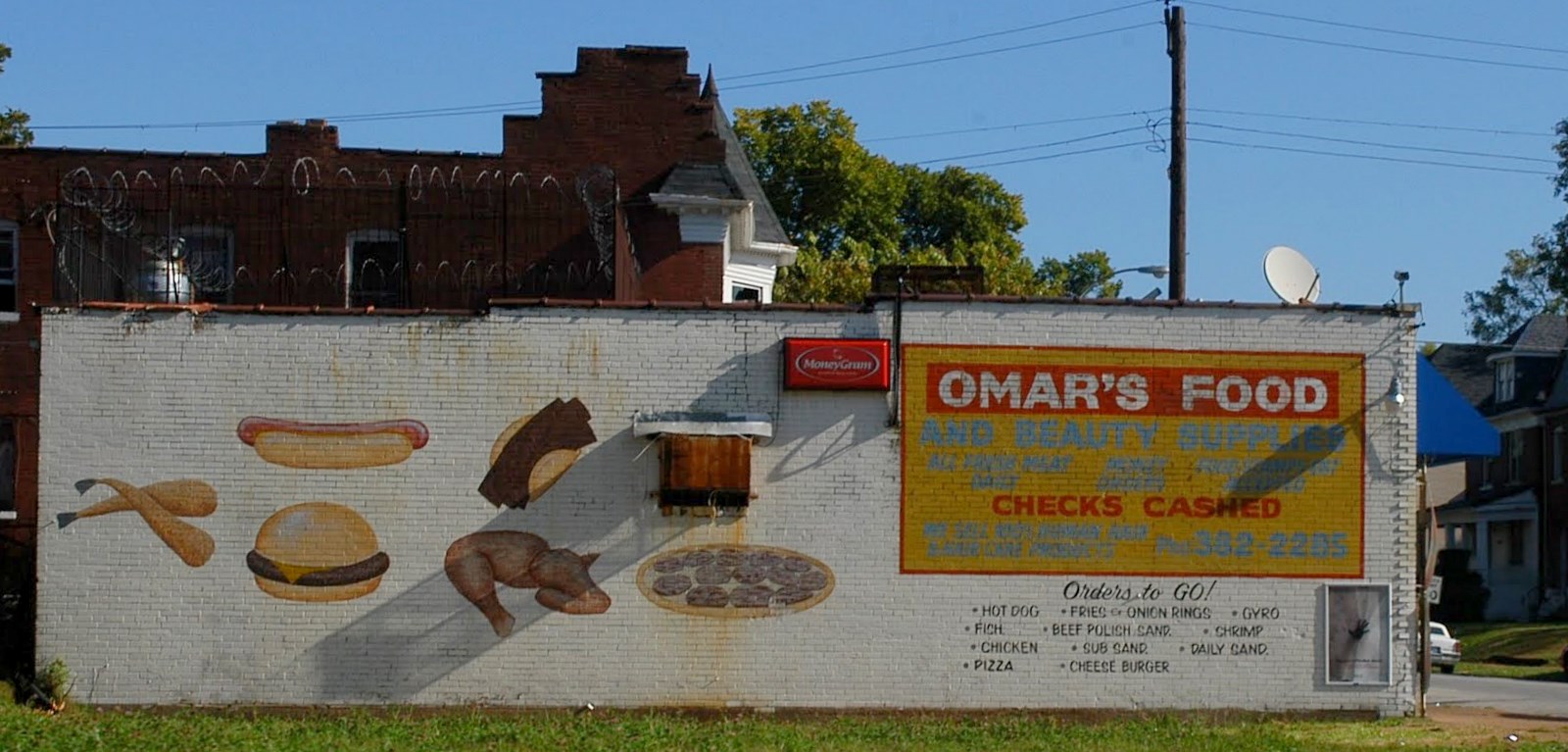




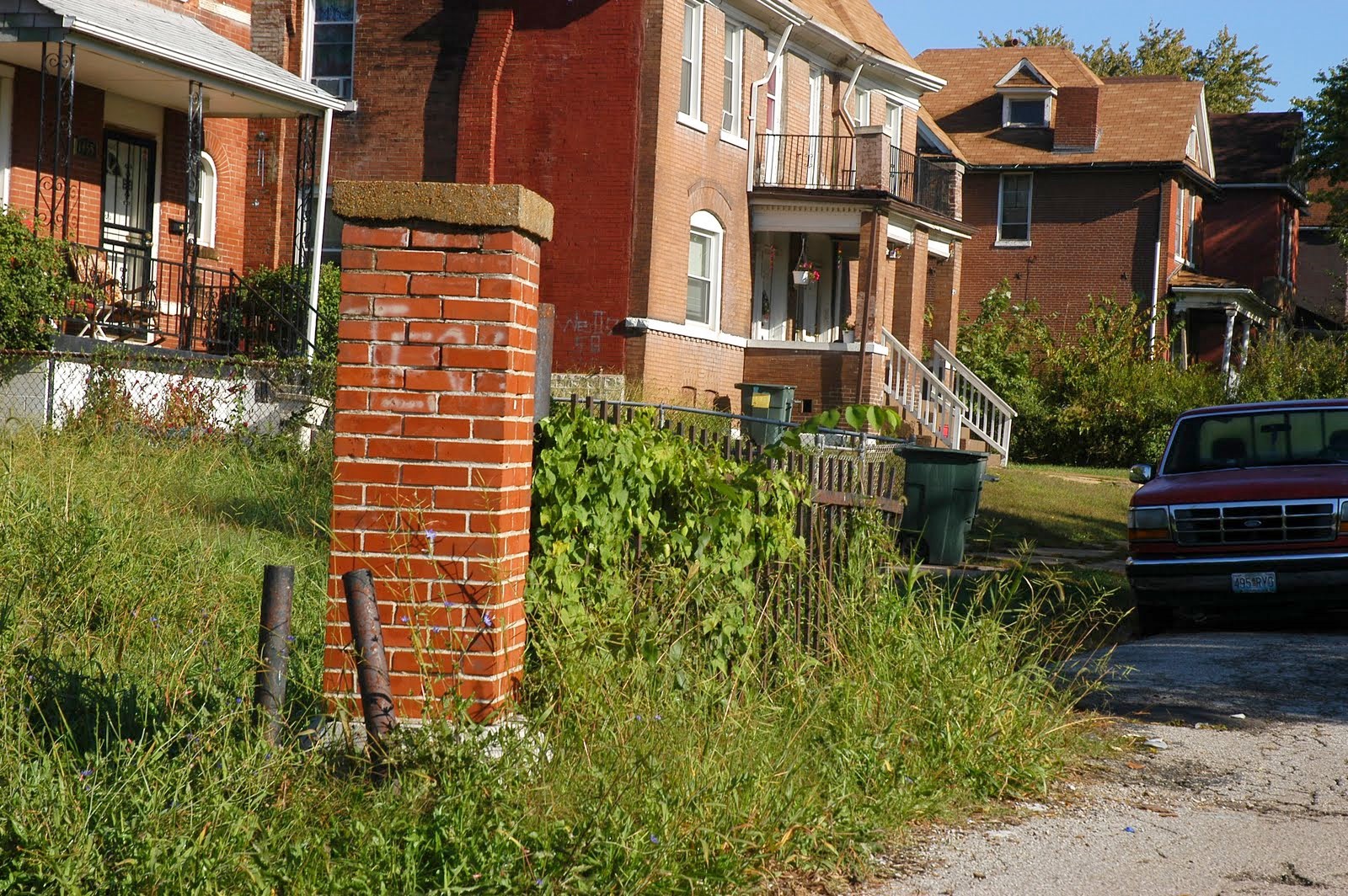


And of course there are some parts of the neighborhood with new housing that makes no attempt to fit in with the older homes.


The bleak pictures are somewhat misleading in that there is still quite a bit of activity on the streets. Typical city neighborhood stuff: nice people who wave when you pass, people walking dogs, people working in the 3 community gardens (thanks-Gateway Greening!) and people sitting on the front porch.

Unfortunately, there’s also a lot of the bad stuff prevalent in Hamilton Heights that gives the north side it’s reputation. Zero racial diversity, few useful businesses, lack of pride/cleanliness and my biggest pet peeve: people walking in the middle of the street that don’t get out of the way of cars. It’s hard to imagine this part of the city ever being anything like central and south St. Louis in my lifetime. Massive investment, tax credits and an influx of immigrants or something. Who knows, I don’t pretend to have the answers. With all that said, it doesn’t seem a completely hopeless place. To me, it’s still an intriguing neighborhood.
I’m especially fascinated with the commercial stretch of Dr. Martin Luther King Blvd. that goes through Hamilton Heights. This must have once been a thriving business district. This stretch must have once had a “main street” feel. There is huge potential here. There are a couple of auto repair shops, night clubs and odds and ends stores; but most of the businesses closed up shop long ago. There is a treasure trove of cool old signs along MLK Blvd.
The former JCPenny’s is especially cool:



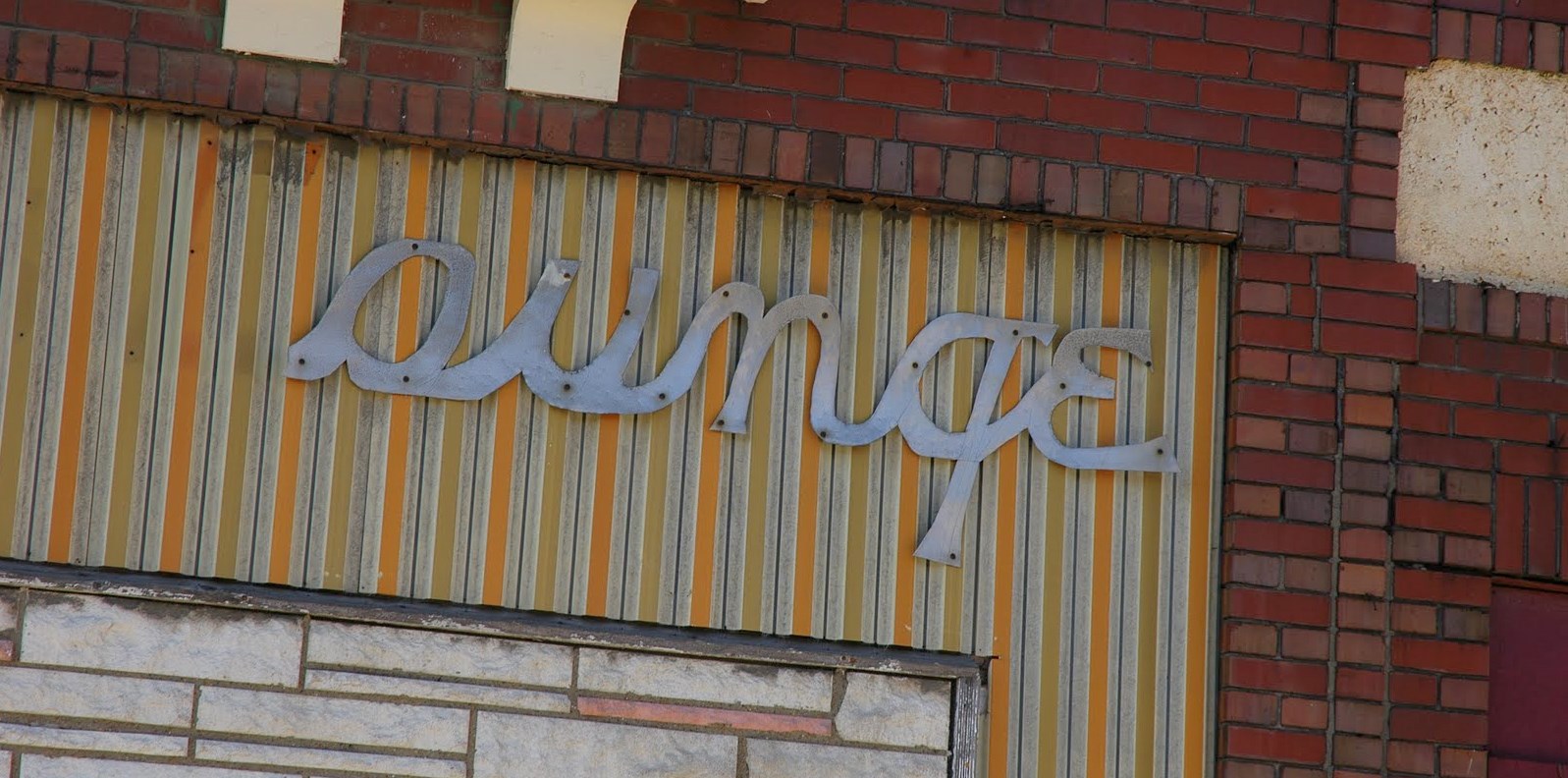



***In July, 2019 I revisited the neighborhood and the following includes updated commentary and photos.***
Misses On Original Tour
The history of the name: The Spaniards claimed this land and granted it to St. Louis. By the mid-1850’s, the land was subdivided and sold as smaller tracts. One such tract became the property and estate of Hamilton R. Gamble, governor of Missouri during the Civil War and namesake for the area. (source)
This was the first North City neighborhood I visited on my tours ten years ago. Back then, I was nervous about not knowing where I was, or taking photos from the street. I have completely gotten over that fear. I was also worried about taking pictures of the overwhelming decay and abandonment as not to kick a part of town when it’s down, or contribute to ruin porn. I will share many more photos to allow for a better feel for the neighborhood in its current state and to help show that there need to be priorities in this city. And, helping the good people in this neighborhood maintain their homes and get access to affordable home insurance policies and improvement loans is something that keeps returning to my mind.
Another fear was that I’d get crap for being a white boy with a camera and the residents would take offense in my presence. In my humble opinion, I couldn’t have been more wrong. With the rare exception, people are intensely proud of where they live and it has been a joy to get my sea legs with talking to people and my life is more rich as a result.
Noticeable Changes
I love this neighborhood. The remaining housing stock and churches are gorgeous. It was built on a recti-linear grid, for density and highly walkable, mixed uses. The current residential vibe increasingly trends toward older folks. I say that because I specifically went to visit on July 4th to see the front yard/porch grilling that I love in St. Louis. I’ve been here long enough to know that the 4th of July fireworks after dark can be really annoying/dangerous. But, the amount of grilling that starts early in the morning is fantastic and it makes me feel strangely patriotic, or proud or something. I can’t exactly place it, but the amount of chicken that hits the grill in the A.M. on the 4th of July is something to behold. Lots of love and good vibes, and by nighttime I’m DONE. It’s a strangely fitting American experience. But I walked away with the feeling that the neighborhood is mainly older folks now with a noticeable lack of younger and middle-aged folks.
There are also many, many more vacant lots and falling buildings. That trend has not improved in the ten years that have passed. I predict a loss in population when the 2020 Census data is tabulated.
What Are The Future Needs?
There is less business, with only a few corner snack/convenience/liquor stores. With the late 2016 closure of Pete’s Shur Sav at Page and Union, there is little in the way of healthy, fresh foods. But, a Sav-A-Lot (which I have come to love for their day-old bread offerings and affordable produce) is building on the former Pete’s site, and there is also space for another building at the corner. If you want services and the basics, you are going to have to go pretty far to get them.
Many homes are falling down. Something needs to happen fast. Prioritizing stabilization and yes, even some targeted demo/clean up is called for. Sadly, I don’t think the neighborhood is on an upward trajectory. I say that with sadness in my heart, not to kick someone when they are down. The people I talked to from my scooter to their front porch said that if there is a storm with high-winds, you can hear buildings falling. In some cases, the board ups are not thorough enough to keep people out and things are getting worse. It’s hard to live next to these places, and sadly, I don’t think stabilization is the priority. Waiting, inactivity and demo seems the default move in the last ten years.
Low interest loans to keep the people here that may not be in a situation to afford the massive expenses of maintaining an old house seem like part of the solution. I want nothing more than these family homes to be passed down to the next generation of St. Louisans who will root down and keep this place dignified vs. slipping further into decline, vanishing from memory.
And by decline, I mean the bad guys winning and taking over and putting the final nail in the coffin toward a dignified place to live. And, they have set up shop here. Neighborhoods like Hamilton Heights should be priority #1 when it comes to city-wide help. We need better leaders and more support of hard working, well-intentioned organizations like Better Family Life that can develop and execute long-term plans that the entire city residency and leaders could get behind and want to support. I’ve not yet seen that plan or leadership for this and surrounding neighborhoods.
This is an all hands on deck part of the city that is going to take a lot of new ideas and energy to turn things around.
Additional St. Louis City Talk and Other Reading:
Hamilton Heights Park – July, 2014
Scooter Ride #5 Dr. Martin Luther King Drive – East to West – August, 2018
The St. Louis Post-Dispatch had a story that touched on Hamilton Heights back in September, 2018:
In the forgotten neighborhoods of St. Louis, residents cling to hope as cleanup efforts sprout – Doug Moore – St. Louis Post-Dispatch
The new photos below from July 4th, 2019 will not include MLK as I thoroughly covered that in the August, 2018 post above, nor will I discuss the park or Cardinals Care ballfield which are pretty much status quo from the post above from 2014.
Some of the recently closed and remaining businesses:


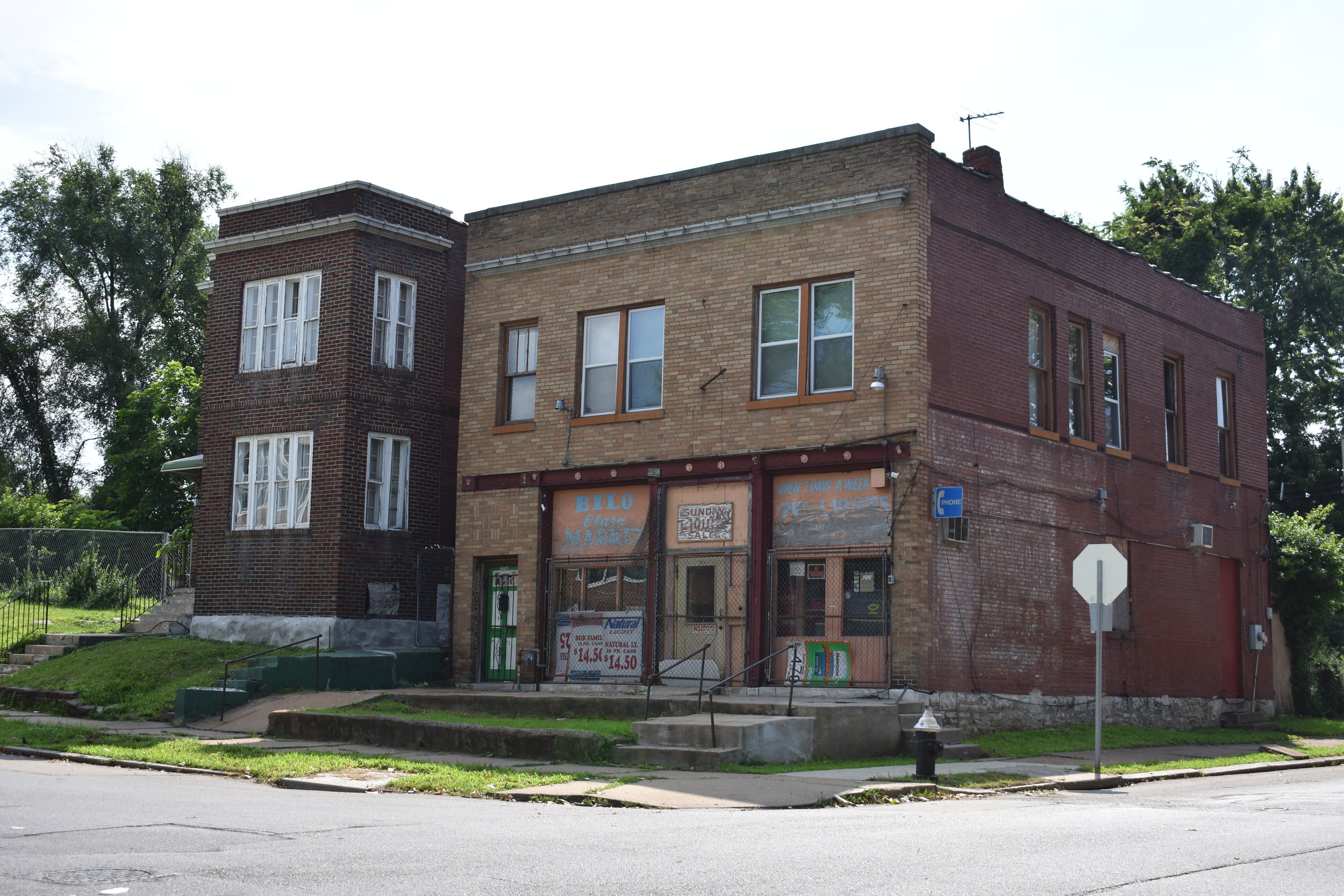


The beautiful Minerva Apartments, more of this please:

The remaining churches and signs of former Jewish places of worship:



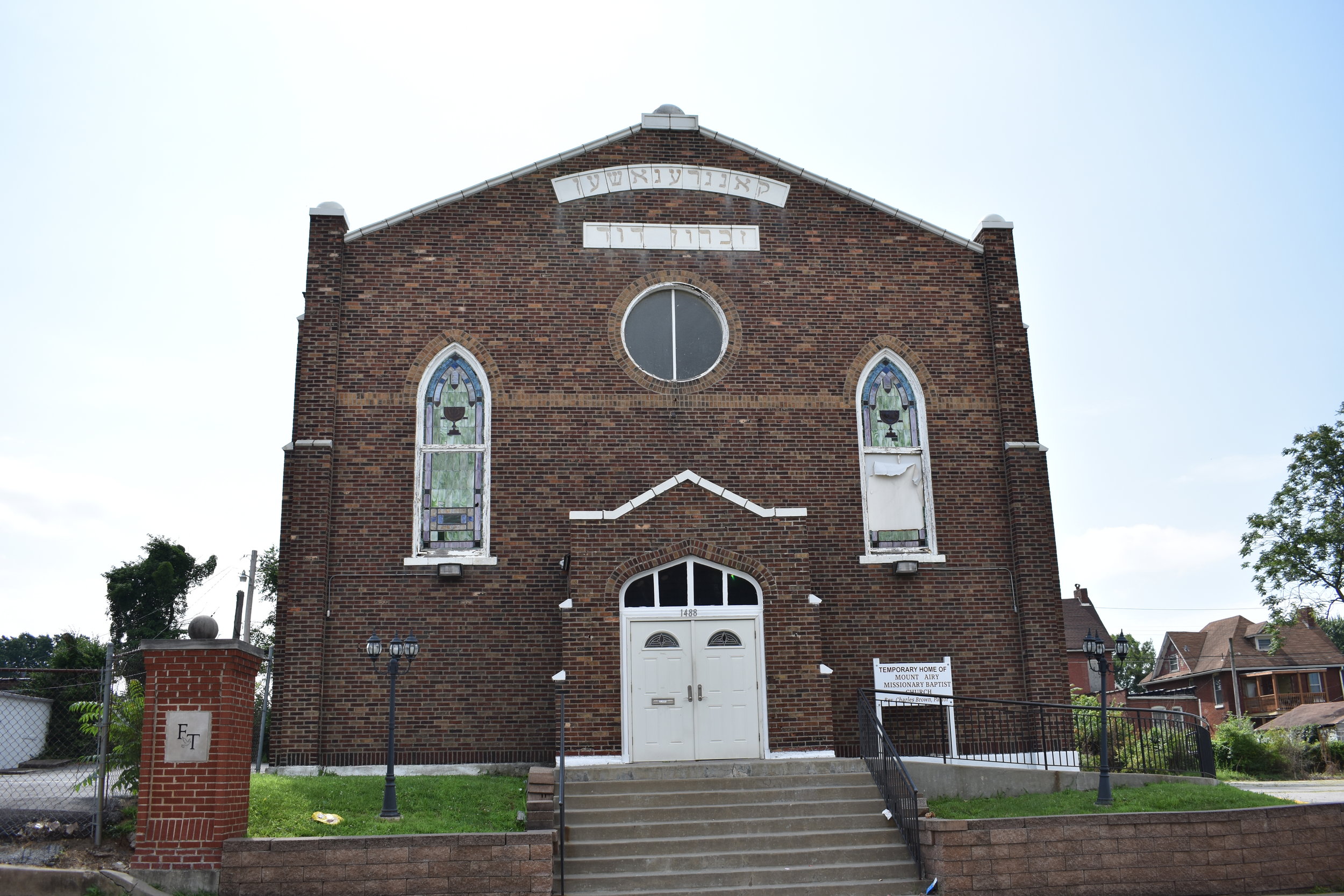

Ford Elementary, built in 1964, still serves the neighborhood, and the former Hempstead School on Minerva closed in 2004. It is one of two William B. Ittner designed schools in the neighborhood. Hempstead is a 1907 masterpiece, but it suffered a fire in 2014 and little has been done to sure it up. The SLPS lists the property for sale on it’s surplus properties website for $110,00. In a perfect world, there would be a city-wide effort to save this building.
The other Ittner building is the 1902 Emerson School on Page; it was purchased by Better Family Life in 2005 and has been in use as their Cultural Center since 2013, what a win. Also included below is the Gwen B. Giles Post Office. Ms. Giles was a powerhouse and has a park named after her.
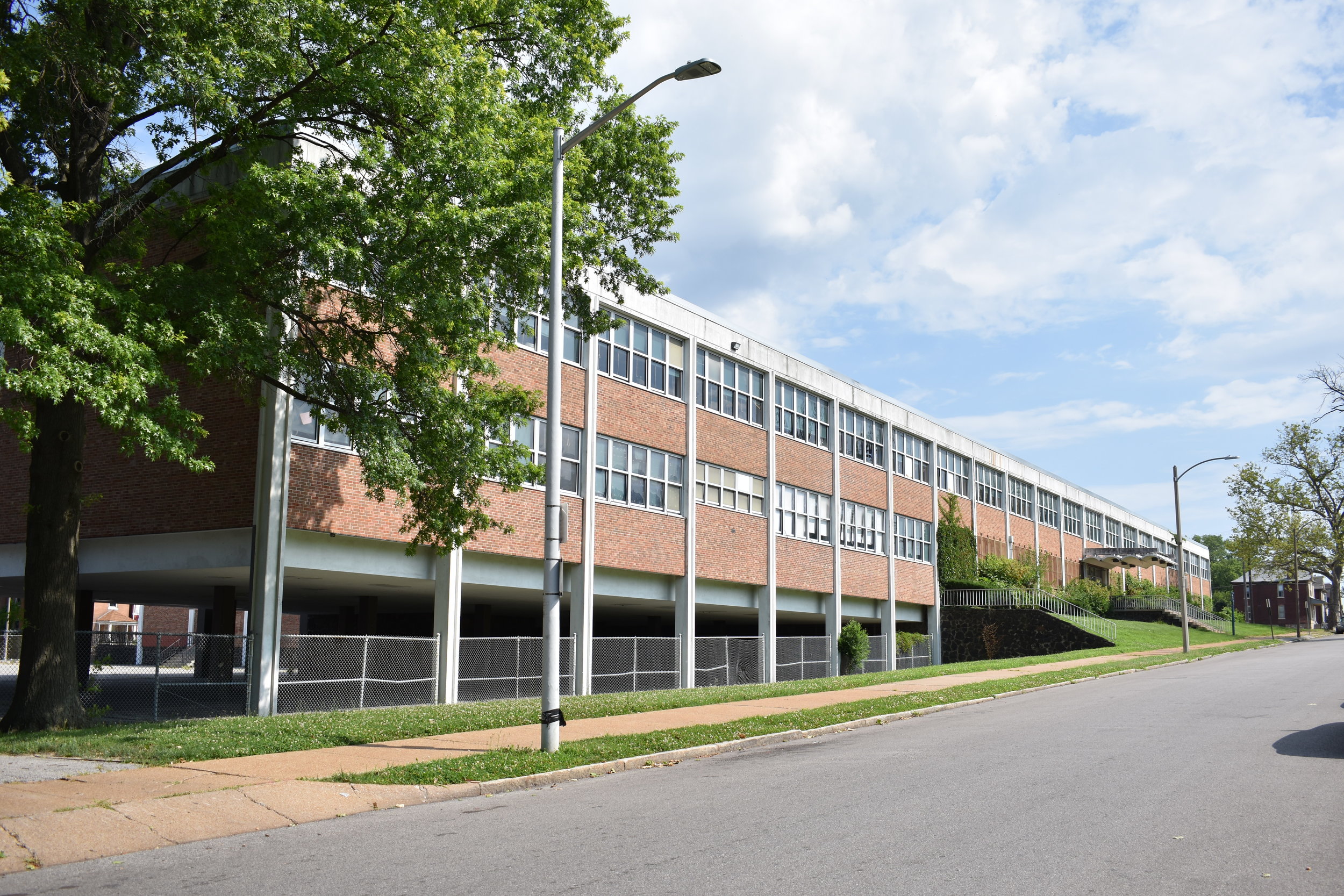



A few of my neighborhood favorites:



Some random eye-catchers:
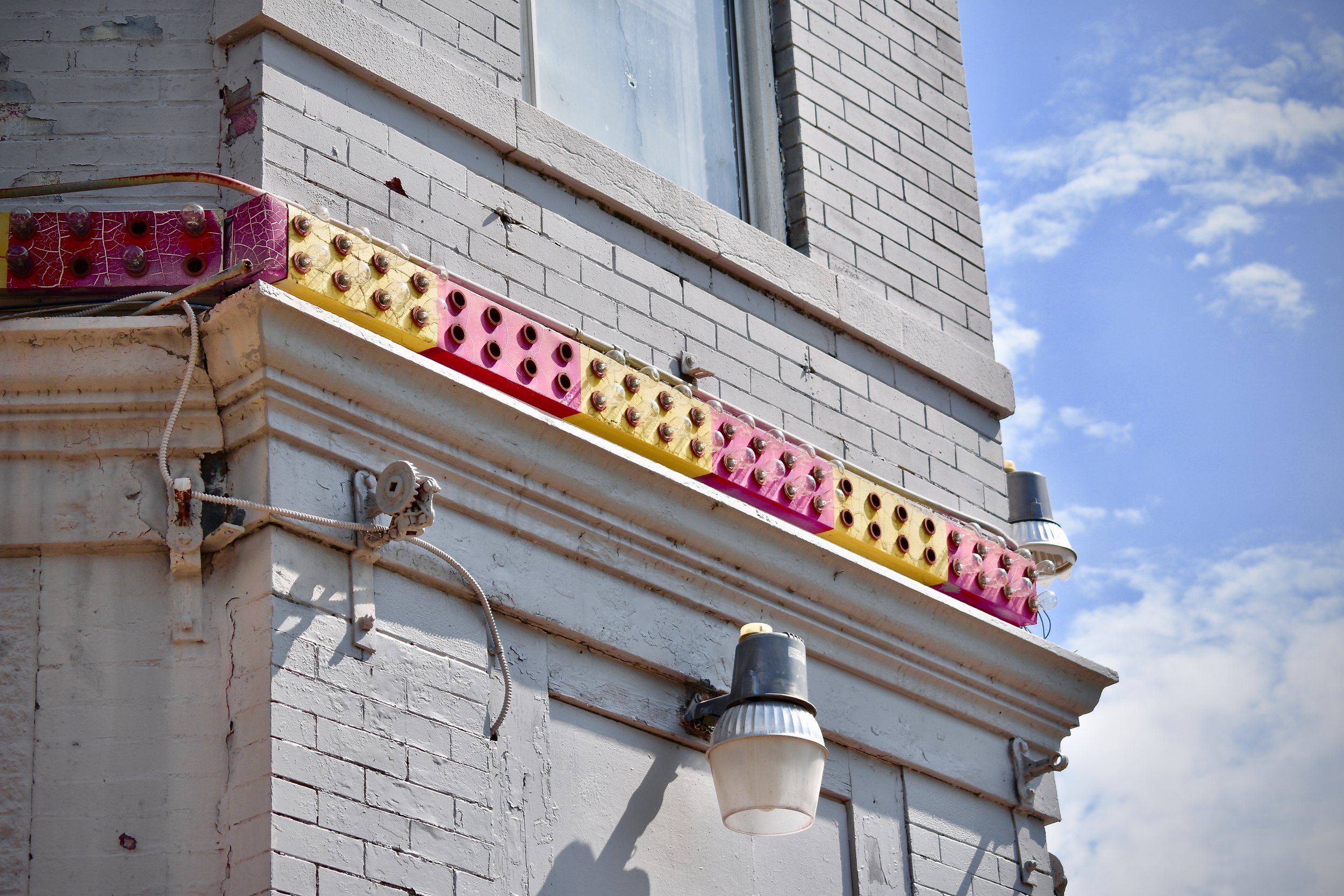


Since I didn’t do a very thorough job of showing the housing styles in Hamilton Heights in the original post, I’ll include them here, ranging from the more stable blocks to the nearly vacant areas as well as some of the newer housing and infill.
Some of the stable stretches:




There are some signs of rehabbing and investment that is most promising:

Yet, you are never far from board ups and vacant former homes:






And much of the other buildings are in various stages of decay:












Areas that are more like fields than a neighborhood, including a few remaining structures that feel isolated:



Some newer infill with mixed results to regain the density and some more suburban ideas for land use are on display:





It’ll be interesting to follow the future of Hempstead School and the Census data on this neighborhood.

 Hamilton Heights is located in north west St. Louis. As you can see in the map, the street grid is relatively in place. The westernmost boundary of the neighborhood abuts Wellston.
Hamilton Heights is located in north west St. Louis. As you can see in the map, the street grid is relatively in place. The westernmost boundary of the neighborhood abuts Wellston.
